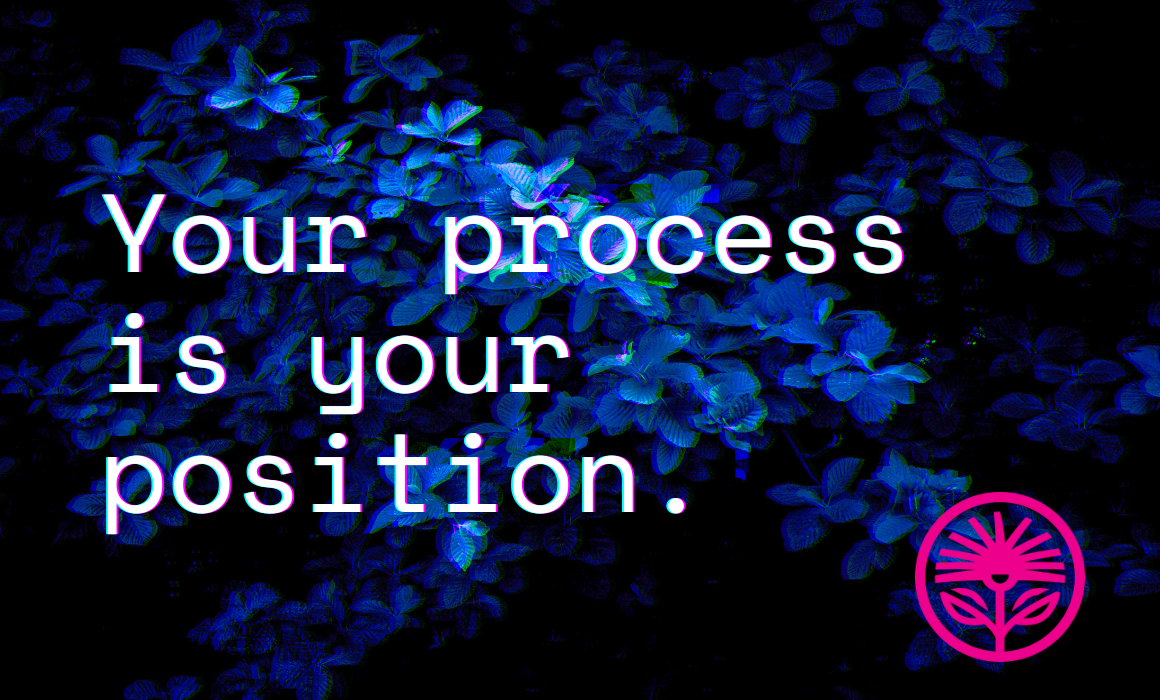Your process is your position — Kelford Labs Weekly
What you do is what you say.

We don’t claim a position in the market by simply stating it, or asking for it.
We stake it out, we articulate why we’ve chosen it as our position, and how we’re able to credibly claim it.
Not based on what we say, but based on what we do.
Which means, in many ways, your process is your position.
The specifics of how you do what you do and the articulation of why you do what you do overlap. Each inform and reinforce the other.
In Competing Against Luck, the authors quote an early pioneer of quality management, who said, “If you can’t describe what you are doing as a process, then you don’t know what you are doing.”
This has a useful corollary: If you can describe what you do as a process, you are more likely to know what you’re doing.
Even more simply: Buyers find processes extra credible.
In that way, your process is extra valuable. It is more than just your means of getting to your end product or service offering. It is also the core of your marketing, your primary means of demonstrating your value at a distance.
This makes marketing so much easier. We don’t have to think about what we’ll say, or how we’ll persuade or convince.
Instead, we think about what we’ll show that demonstrates how our process works and why we’ve made the decisions and tradeoffs we’ve made to do it our way.
Our marketing doesn’t have to be as hard as we often make it. It can be as simple as showing off how we do our work, what goes into what we make or sell, and why we’ve made the choices we’ve made.
But what do you focus on? What do you show and demonstrate?
I have a simple experiment I call the Robo-Alien Test. It posits a sophisticated, intelligent observer who has no clue about your business or industry. Like a space alien or a robot.
It asks, “If they observed you working all day, what would they think you do?”
For me, they’d think that I spend my days reading books, typing on a computer, drawing diagrams on a chalkboard, and asking questions to a screen.
In many ways, that is my process. I read deeply, I write daily, I create simple frameworks to make marketing decisions easier, and I counsel clients by helping them uncover their unique value.
My marketing, then, need only be a demonstration of that work. Which is basically what this newsletter is.
So the question to you is, what’s the answer to your Robo-Alien Test? What do you do all day, and how could you describe it in a way that stakes out a position in the market—a unique approach to solving your customers’ challenges?
You could also ask your friends or colleagues to give you insight into how you work and how you spend your time. What do they observe about how you spend your time and what you pay most attention to? What you dismiss is likely what they find most interesting or important, so take careful notice of what they notice.
What you find easy is probably what your client, your ideal audience, finds difficult.
By defining and articulating your process, and focusing your marketing position on what makes it unique, you also fend off worry about your competitors.
As the authors write in Competing Against Luck, “While it may be easy for competitors to copy products, it’s difficult for them to copy experiences that are well integrated into your company’s processes.”
By keeping your efforts focused on your own unique process, and how you can demonstrate it, you can focus less on what everyone else is doing and saying.
And by creating marketing about your process, you end up refining and improving your process itself. They say that “clear writing comes from clear thinking,” but as Scott L. Montgomery notes in The Chicago Guide to Communicating Science, the process also works in reverse.
“Good, clear writing—writing that teaches and informs without confusion—emerges from a process of struggle, or if you prefer, litigation. … Most often, the terms of the formula given above need to be reversed: ‘clear thinking can emerge from clear writing.’”
By articulating and sharing your process, you’ll inevitably have to write about it. Which will force you to think more deeply about it than you have before, which will enable you to improve and iterate upon it.
You’ll also start approaching your process from the customer’s side of the table—you’ll think more deeply about how your process benefits them in particular.
And how it might be adjusted to benefit them even more.
This creates a virtuous cycle, where the act of articulation and demonstration of your process improves it, and your improved process makes articulating and demonstrating it so much easier. And on and on, until what you do and what you say are perfectly connected.
Because your process is your position. What you do is what you say.
Which means, you can strip out whatever isn’t working, whatever isn’t resonating with your clients or isn’t valuable to them.
Your process is valuable, it is what creates the value you market and sell to your clients.
And it is also valuable to you as a marketing tool itself. As a way of articulating and demonstrating your credibility.
So don’t dismiss your process as being too obvious or too rote to share. If you can describe what you do as a process, you’re more likely to know what you’re doing.
Which is exactly what your clients are looking for.



